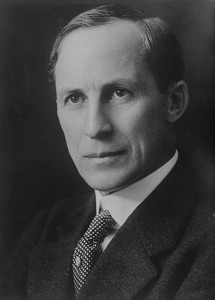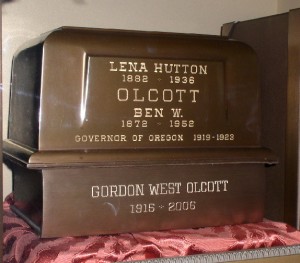Arthur O’Leary’s traveling companion, Ben Olcott has quite a story of his own, which I will summarize here.
Also born in Keithsburg, Illinois, Ben left earlier on his adventures west and in 1891 at the age of 19 moved to Salem, Oregon. He seemed to find Oregon his new home base from which he forayed to parts north to search for adventure and gold. After his 1898 trip with Arthur, he returned to Illinois to bank briefly and then headed back to Alaska in 1904. His journey ended notably when he drove a dog sled team to Nome, a trip of over 1,000 miles up theYukon and Tanna Rivers in the height of winter. Settling in Fairbanks, Olcott found work as a gold dust teller, and later a bank branch manager. He managed to make a sizeable profit from gold prospecting, allowing him to move back to Oregon.
Olcott became involved in Oregon politics because of his brother-in-law Oswald West and so found himself succeeding Governor Withycombe in 1919 who abruptly died of a heart attack only two months after being elected. Olcott served as governor until 1923 until he was defeated by the Ku Klux Klan candidate, Walter Pierce. Olcott went back to banking, first to Long Beach, California and then back to Portland. He died in Portland on July 21, 1952, and was interred in Mount Crest Abbey Mausoleum in Salem, Marion County, Oregon. He may have been pictured in the photos of Arthur O’Leary below, but here are his portrait and gravestone.





